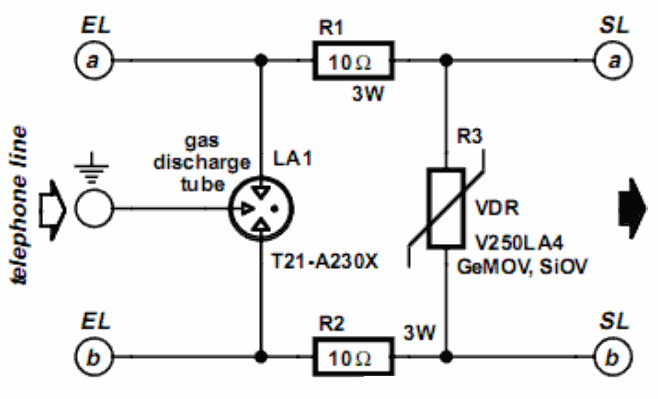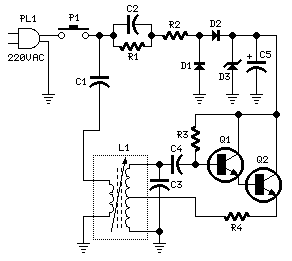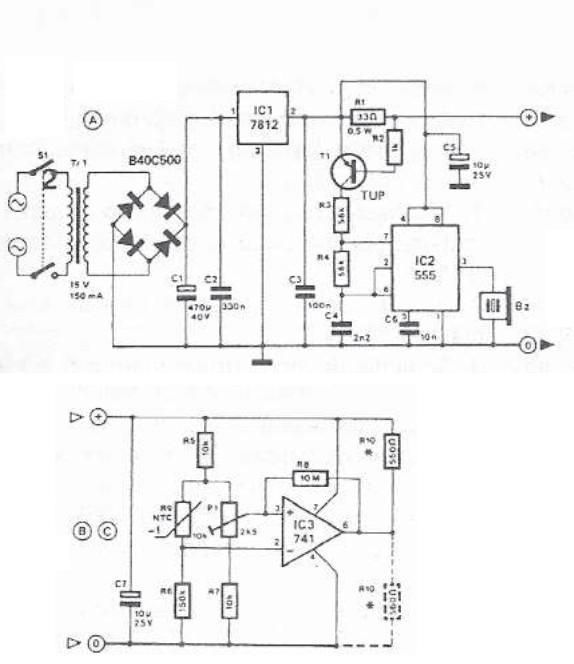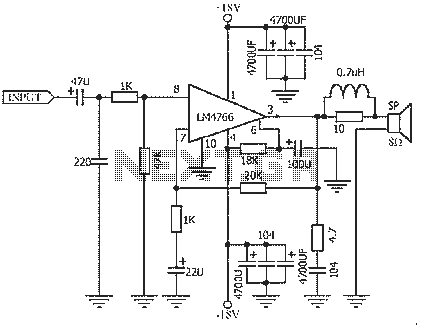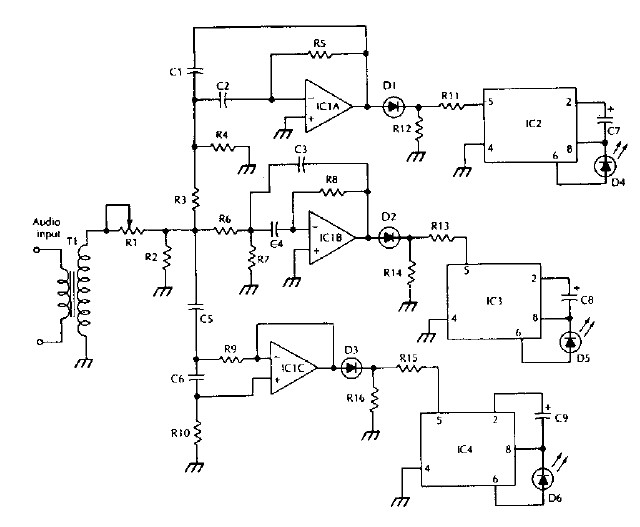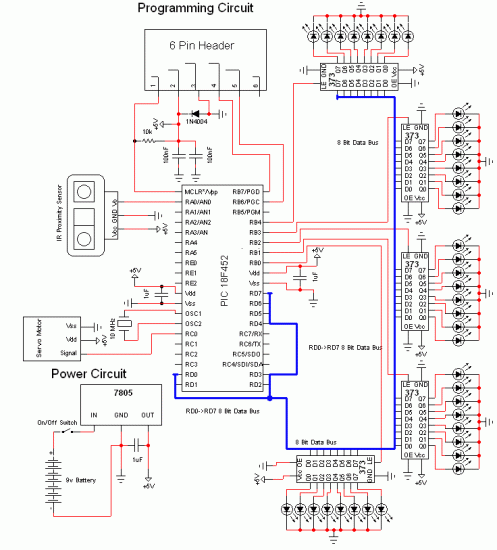
5-channel low-power programmable sensor signal processor with AD7714 circuit
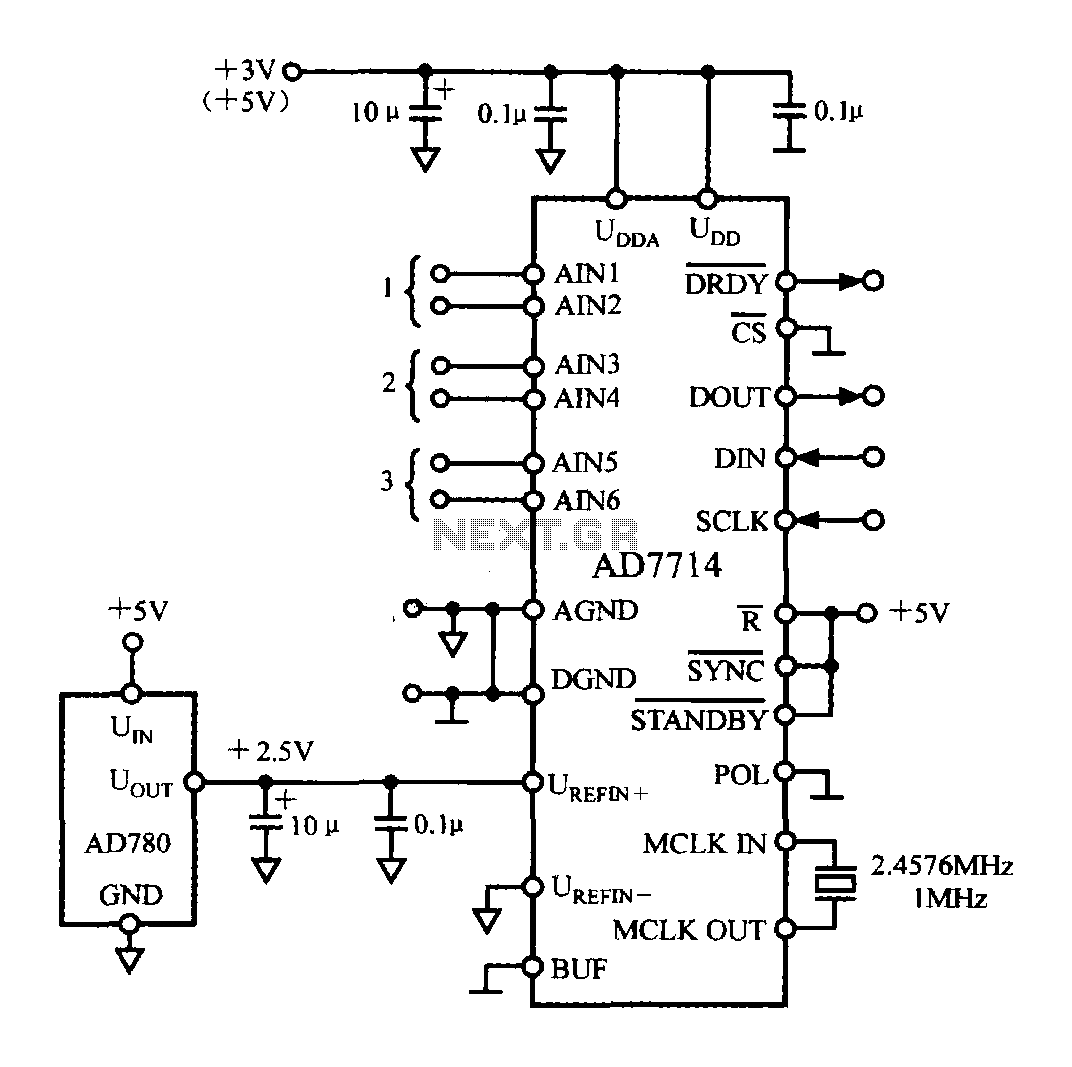
The typical application circuit for the AD7714 is illustrated in the accompanying figure. The UDD and UDDA terminals of the AD7714 can be connected to either a +3V or +5V power supply. The analog inputs are arranged as three differential pairs of input terminals. The AD780 component supplies a precise +2.5V reference voltage. The CS (Chip Select) terminal is connected to a non-terminated DGND, and the AD7714 is configured for a 3-wire serial interface. A quartz crystal or ceramic resonator is used to provide the master clock. In certain specialized applications, the UDD and UDDA terminals may require two independent power sources for operation.
The AD7714 is a high-performance sigma-delta analog-to-digital converter (ADC) designed for precision measurement applications. The device features an integrated programmable gain amplifier (PGA) that allows for the amplification of small differential signals, making it suitable for use in sensor applications. The differential input configuration enhances noise immunity and improves signal integrity, which is crucial for accurate data acquisition in noisy environments.
The AD780 voltage reference is essential for ensuring that the ADC operates with high precision. By providing a stable +2.5V reference voltage, the AD780 minimizes the effects of power supply variations and temperature fluctuations on the ADC's performance. This stability is critical for applications requiring high accuracy, such as industrial process control and medical instrumentation.
The 3-wire serial interface configuration simplifies communication with microcontrollers or digital signal processors (DSPs). This setup allows for efficient data transfer and control of the ADC, facilitating seamless integration into various digital systems. The use of a quartz crystal or ceramic resonator as the master clock source ensures that the ADC operates at the correct sampling frequency, which is vital for maintaining the integrity of the digitized signal.
In applications where the power supply requirements are stringent, the option to use two independent power sources for the UDD and UDDA terminals provides flexibility in design. This capability allows designers to optimize power consumption and performance based on specific application needs, ensuring that the AD7714 can meet the demands of diverse operational environments.AD7714 Typical application circuit is shown in Fig. UDD, UDDA end of the AD7714 can be connected to + 3V or + 5V power supply. Analog inputs are configured as three differential pair of input terminals. AD780 provides precision + 2.5V reference voltage. The CS non-terminated DGND, AD7714 is configured for 3-wire serial interface. Provide the master clock by a quartz crystal (or ceramic resonator). In some special applications require UDD, UDDA end by two independent power sources to drive.
The AD7714 is a high-performance sigma-delta analog-to-digital converter (ADC) designed for precision measurement applications. The device features an integrated programmable gain amplifier (PGA) that allows for the amplification of small differential signals, making it suitable for use in sensor applications. The differential input configuration enhances noise immunity and improves signal integrity, which is crucial for accurate data acquisition in noisy environments.
The AD780 voltage reference is essential for ensuring that the ADC operates with high precision. By providing a stable +2.5V reference voltage, the AD780 minimizes the effects of power supply variations and temperature fluctuations on the ADC's performance. This stability is critical for applications requiring high accuracy, such as industrial process control and medical instrumentation.
The 3-wire serial interface configuration simplifies communication with microcontrollers or digital signal processors (DSPs). This setup allows for efficient data transfer and control of the ADC, facilitating seamless integration into various digital systems. The use of a quartz crystal or ceramic resonator as the master clock source ensures that the ADC operates at the correct sampling frequency, which is vital for maintaining the integrity of the digitized signal.
In applications where the power supply requirements are stringent, the option to use two independent power sources for the UDD and UDDA terminals provides flexibility in design. This capability allows designers to optimize power consumption and performance based on specific application needs, ensuring that the AD7714 can meet the demands of diverse operational environments.AD7714 Typical application circuit is shown in Fig. UDD, UDDA end of the AD7714 can be connected to + 3V or + 5V power supply. Analog inputs are configured as three differential pair of input terminals. AD780 provides precision + 2.5V reference voltage. The CS non-terminated DGND, AD7714 is configured for 3-wire serial interface. Provide the master clock by a quartz crystal (or ceramic resonator). In some special applications require UDD, UDDA end by two independent power sources to drive.
